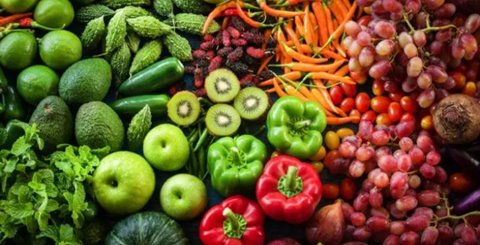Disruption of the Traditional Food Industry
The health trend that’s been developing over the past few years isn’t slowing down anytime soon. Nowadays, consumers are much better educated about their health. And a big part of this health journey obviously includes food.
Consumers educate themselves on the benefits of healthier choices, and because of this, are choosing different products and brands than before. This is where most traditional food producers who tend to favour cost efficiency over quality are falling behind. Companies that focus on health drive change in a faster, more innovative way. Often, a need for reinvention is needed for traditional food companies to stay relevant in this day and age. Some tips that could help you pivot your product portfolio, or other changes towards a healthier food future within your food company:
1. Rethinking convenience
Convenience is, and has been for years, in high demand. However, the focus of convenience has shifted. Whereas before convenience largely meant simply heating up a microwave meal, nowadays convenience means healthy fresh ready-made meals, meal kits or fresh groceries delivered on your doorstep. Rethink what convenience means for your customers and act on it.
2. Combining forces with start-ups
Start-ups often drive change quicker and find new and innovative ways of producing food. Combining forces is a way of helping each other out. The start-ups get a larger platform to market their products to and more means and time to innovate and improve since they don’t have to constantly look out for money, which in turn works out well for the large manufacturer.
3. Short ingredient list
The shorter the ingredient list, the better. Simplicity is the way to go. Now more than ever, consumers are looking at the ingredients of the product in a supermarket before they decide to buy. Endless ingredient lists with unknown or highly processed ingredients can scare consumers away, since they want to know what they’re buying and eating. Quality over quantity!
4. Transparency is key
Customers not only focus on what the product exactly is, but also how the product is made and by whom. More and more initiatives are popping up to give the consumer full insights into the product. Think of the blockchain technology, which already is used by some food companies and retailers to show complete transparency. Schouw Informatisering is currently working on a project together with the WUR to find out the potential of the Blockchain for the agri/food sector.
5. Invest in personalized nutrition
Personalized nutrition with the aim of a healthier diet is still in its early stages, but is definitely up and coming. According to research by Rabobank, cooperation across the value chain is the way to go if you want to invest in personalized nutrition as a food manufacturer, since a food manufacturer on its own often lacks the needed consumer trust. Retailers are currently taking the lead in becoming the trusted healthy food adviser for the consumer, so cooperating with them might be a great way to invest in personalized nutrition and a healthier future, and reap the benefits at the same time.
6. Source locally
Consumers are turning away from mass-produced national packaged brands. Sourcing your ingredients locally is the way to go and companies that already do this are creating an ever-growing customer base.
Want to know what we can do for your food company to make the needed changes? With an ERP platform you are able to easily organize your business processes and meet consumer demands with regard to transparency ingredients, trust and more. Do not hesitate to get in contact!
 Nederlands
Nederlands English
English



